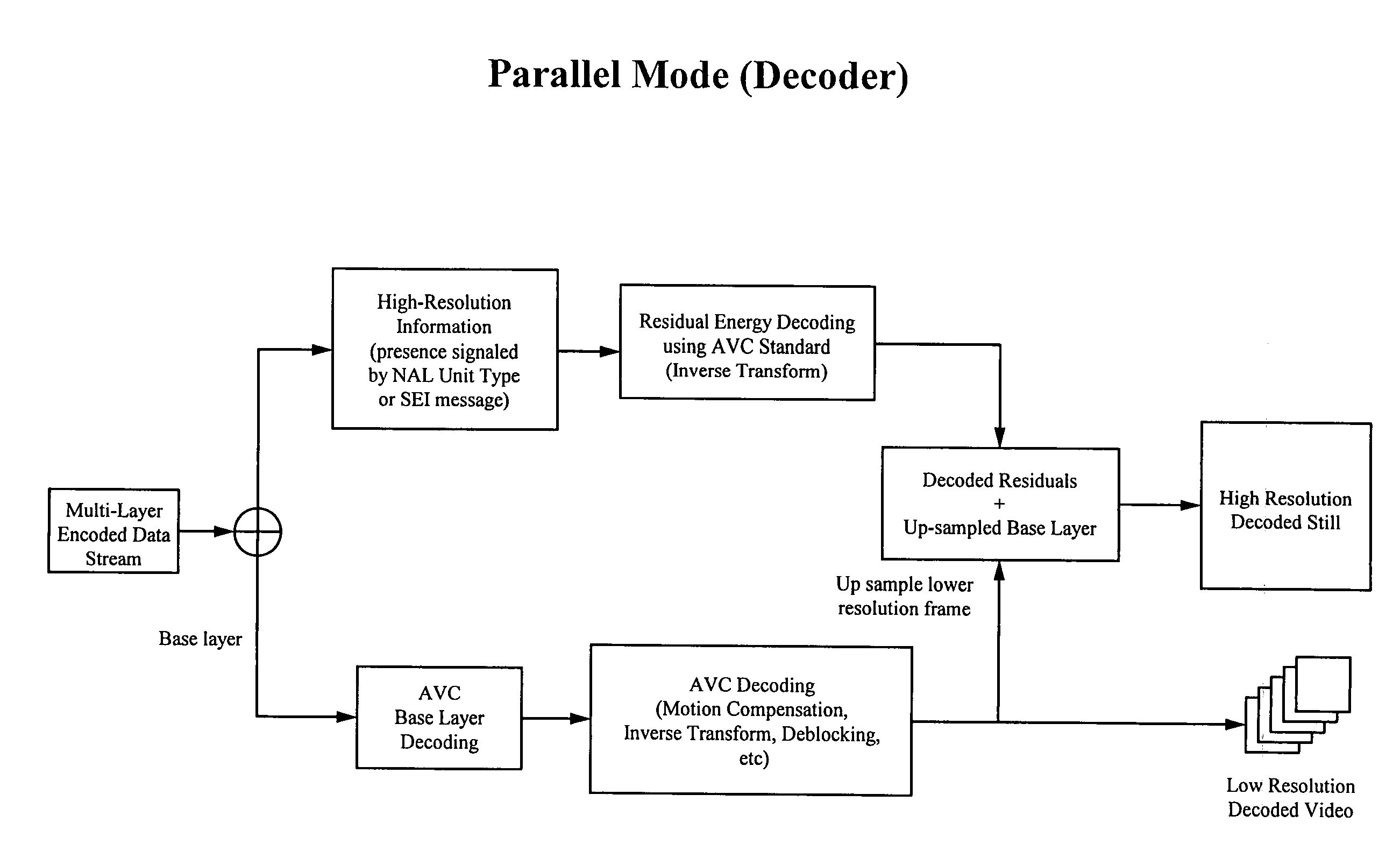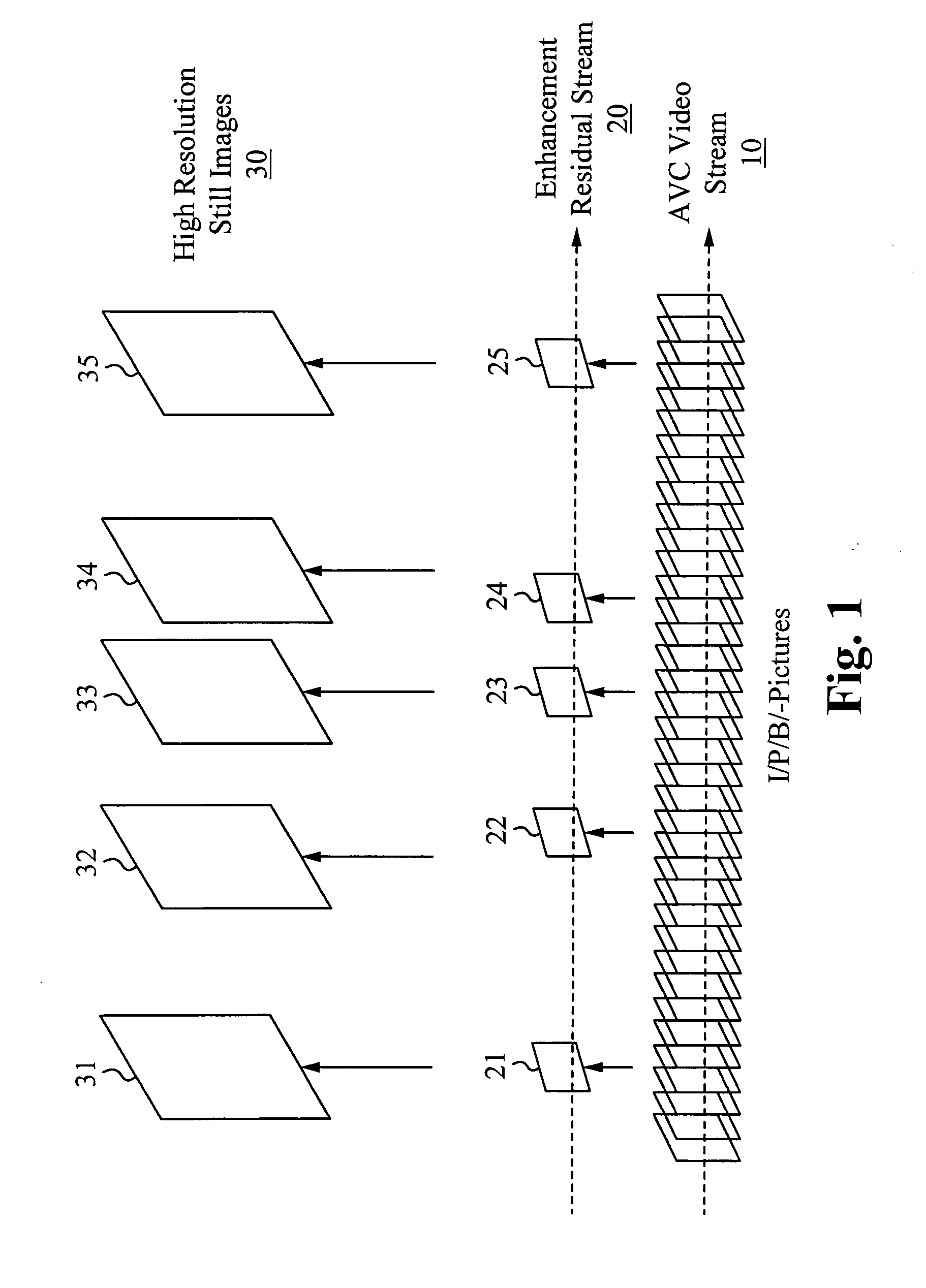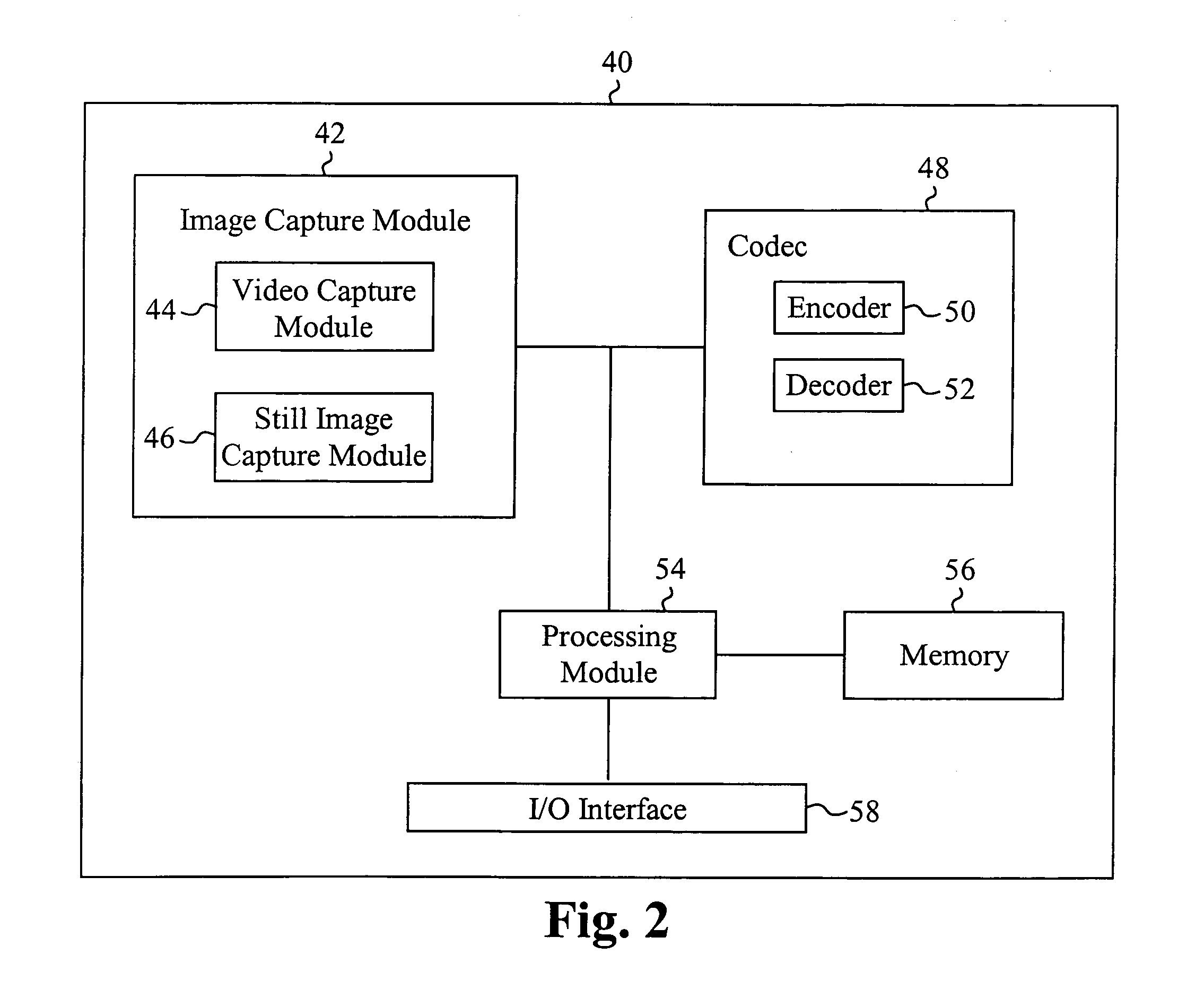Extension to the AVC standard to support the encoding and storage of high resolution digital still pictures in parallel with video
a technology of avc and avc standard, which is applied in the field of video encoding, can solve the problems of encoding and decoding algorithms, vcd requires high bitrate, and the encoding time may also be an issue, and achieves the effects of high resolution, low resolution and high resolution
- Summary
- Abstract
- Description
- Claims
- Application Information
AI Technical Summary
Benefits of technology
Problems solved by technology
Method used
Image
Examples
Embodiment Construction
[0040]FIG. 1 illustrates a parallel mode using a modified AVC standard to store high resolution still images in parallel with traditionally encoded AVC video. An AVC formatted video stream 10 includes a succession of video frames. An enhancement residual stream 20 includes residual information corresponding to one or more high resolution still images 30 captured at random intervals. For each high resolution still image 31, 32, 33, 34, and 35, there is corresponding residual information 21, 22, 23, 24, and 25 in the enhancement residual stream 20. Although five high resolution still images are shown in FIG. 1, it is understood that more or less than five high resolution still images can be captured. The residual information is the difference between the original high resolution still image and the corresponding decoded up-sampled low resolution video frame.
[0041]The modified AVC standard enables each high resolution still image to be captured at any random interval. In other words, t...
PUM
 Login to View More
Login to View More Abstract
Description
Claims
Application Information
 Login to View More
Login to View More - R&D
- Intellectual Property
- Life Sciences
- Materials
- Tech Scout
- Unparalleled Data Quality
- Higher Quality Content
- 60% Fewer Hallucinations
Browse by: Latest US Patents, China's latest patents, Technical Efficacy Thesaurus, Application Domain, Technology Topic, Popular Technical Reports.
© 2025 PatSnap. All rights reserved.Legal|Privacy policy|Modern Slavery Act Transparency Statement|Sitemap|About US| Contact US: help@patsnap.com



